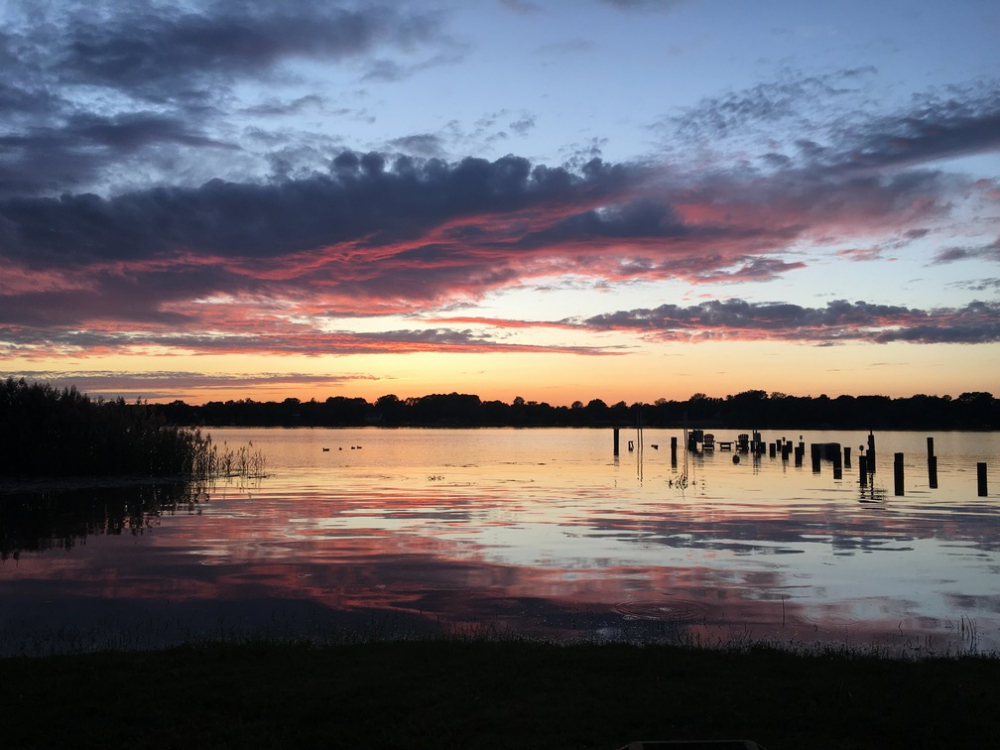
My yard is still a soggy mess after last week’s convergence of subtropical storm Melissa and the Full Hunter’s Moon caused the highest high tides I have seen in my three years in Chestertown. The Chester River was a little too close for comfort, but the power of water, gravity, and air is fascinating, as long as I am inside the red roof inn situated on a little rise.
Last Friday, the National Hurricane Center decided the nor’easter which had been causing high winds and surf in New York and southern New England had graduated to Subtropical Storm Melissa, the 14th named storm of the 2019 Atlantic hurricane season. (I chuckled at the name given that I work with two Melissas at Kent School who are forces to be reckoned with themselves – but that is another story.) Although we did not get the full effects of Melissa in Maryland, the Chesapeake Bay saw onshore winds pushing the water north.
The Full Hunter’s Moon on the 15th, named after the hunts carried out in preparation for surviving a long winter, exacerbated the effects of the storm. High tides and low tides are caused by the moon, whose gravitational pull generates the tidal force. According to NOAA, the tidal force causes Earth—and its water—to bulge out on the side closest to the moon and the side farthest from the moon. These bulges of water are high tides.
All I know is that I awoke last Saturday to find a lot of ducks swimming on my lawn. Reading on the porch and watching the water slowly recede made me think about sea level rise. The sea level continues to rise at a rate of about one-eighth of an inch per year. The two major causes of global sea level rise are thermal expansion caused by warming of the oceans (since water expands as it warms) and increased melting of land-based ice, such as glaciers and ice sheets. (NOAA)
I have watched the ground erode and the Chester rise several inches in the past three years on our little patch of river paradise. In fact, we had to extend our dock to reach the lawn. You cannot ignore the science of climate change when you see its effects in your very own backyard – literally.
I am a fan of Swedish teenager Greta Thunberg and Native American teenager Autumn Peltier, two girls who can change our thinking on climate change and access to clean water, respectively. Both have taken their case to the United Nations this past year and both have science on their side. Cultural anthropologist Margaret Mead said: Never doubt that a small group of thoughtful committed citizens can change the world. Indeed, it is the only thing that ever has. I believe these two environmental activists, along with others, will change the world.
As educators, we stand in awe every day of the students in our care and their love of learning. We have the noblest job of all humankind – to create tomorrow’s leaders, authors, musicians, researchers, engineers, scientists, technology wizards, etc. I have been thinking a lot lately about how we can best educate our students for their world, not ours, and I am becoming increasingly focussed on teaching kindness and empathy, as well as fostering the critical thinking, curiosity and creativity skills necessary to solve real-world problems. I read recently that Jason Savage, Senior Product/Test Engineering Manager at Silicon Laboratories, said, “Curiosity is one of the most fundamental things that will make you a great engineer or great scientist.” Exactly.
Like the changing tides, the pull on our students to change some aspects of our world is real.
At Kent School, we are teaching citizen scientists who are passionate about the environment, the Chesapeake Bay, our Monarch Butterfly Waystation, Spot, the terrapin we are raising for the TERP project (Terrapin Education and Research on Poplar), and the food insecurity in our own Kent County. Gen Alpha – the first generation born entirely within the 21st Century, and the generation encompassing our Kindergarteners who will graduate from high school in 2032 – is going to surprise you. Just wait!



Write a Letter to the Editor on this Article
We encourage readers to offer their point of view on this article by submitting the following form. Editing is sometimes necessary and is done at the discretion of the editorial staff.